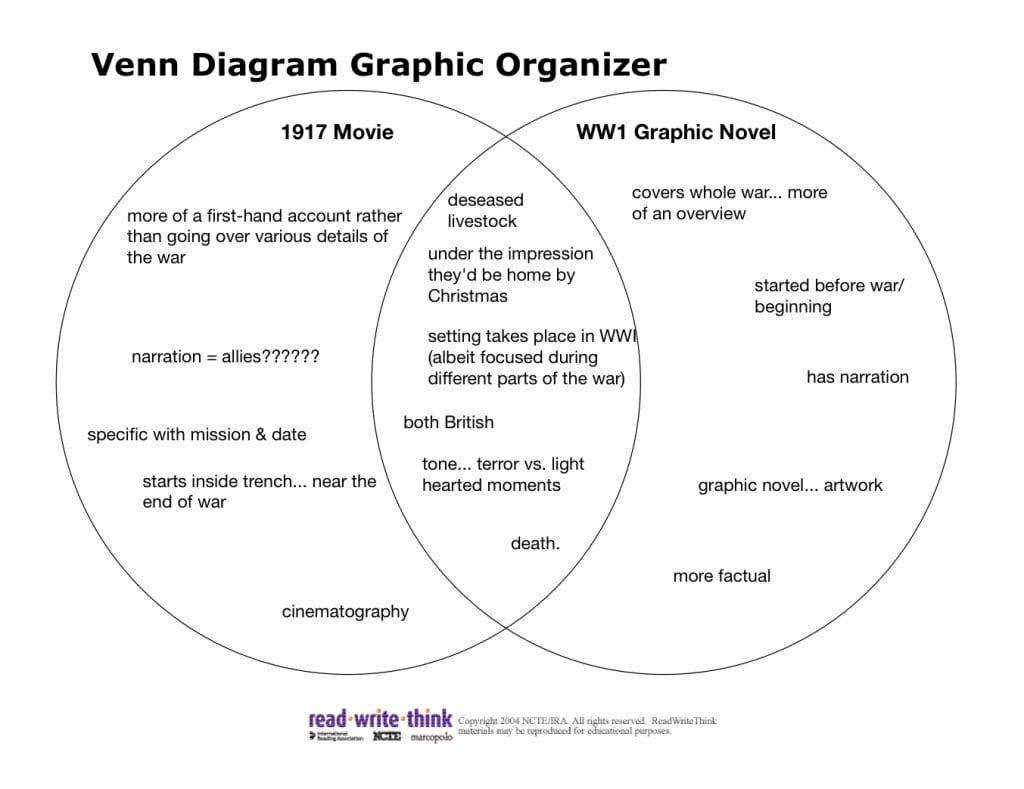In my opinion, the most annoying aspect of summative blog posts is not writing them – which may come as a surprise to some. It’s adding the visuals.
Click, click. Exporting… Share to files. Click… Click.
File after file, photo after photo. It drives me insane, and takes up nearly as much time as writing the entire post does. I do not have the patience for this. If drag and drop was a thing for WordPress, my life would be significantly easier.
How might we use graphic novels to understand Canada’s involvement in WWI?
Anywho, in Humanities as of late, we have been studying World War I(WWI). As suggested by our driving question, our goal was to study Canada’s involvement during this war, and retell our research through the use of graphic novels.
However, to first understand Canada’s involvement in WWI, we had to understand the causes behind WWI in the first place. We read various texts on this topic, which you can see my notes for here:
After developing an understanding of some of the underlying causes behind WWI, we were to write a paragraph reflection on the causes. Here’s mine:
Then, we read a graphic novel titled “The War to End All Wars: World War One”. Afterwards, I wrote a paragraph reflection on the consequences inflicted on people due to WWI. I highlighted aspects such as post-traumatic stress disorder (known as ‘shell shock’ at the time), and how the change in borders resulted in an abundance of refugees. You can read my reflection here:
After enduring a brief lecture (terrifying, I know), about propaganda, I completed an analysis worksheet on a poster advertisement from WWI. This is my analysis:
Our class also got the privilege to watch 1917 in the school’s Vortex theatre. I ended up enjoying the movie more than I had anticipated to… though I am forever disappointed about the fact I never got to see the protagonist sleep against a tree. I shall forever reflect upon my experience watching that movie, with deep regret. I made a Venn diagram to compare 1917 with the graphic novel we read, which you can see here:
Before we actually chose a topic to research for our final comic, we “practiced” utilizing 5W’s to retell a different historical event in advance. My topic was the Battle of the Falkland Islands. Here is my 5W sheet:
We also took notes on various techniques we can use when making comics:
Then, we began to actually research our topic pertaining to Canada’s involvement in WWI. My final chosen topic was Canada’s 100 Days. Originally, I chose the topic since I had assumed it would be an interesting topic which I would be able to find many sources on.
I was wrong.
As I researched, I found various sources that contradicted each other, and I had difficulty making sense of all the dates and names of events listed. Thankfully, I did manage to produce something in the end… though it admittedly is not my best work. Below is my 5W’s sheet along with my storyboard draft.
After receiving feedback during a teacher-student conference, I went on to actually create a draft of my comic. I then received peer feedback from my friend, Ava. With the help of her feedback, I then completed my final comic, which you can read by clicking this image, if you didn’t see it at the beginning of my post:
We also watched a video titled “Service and Sacrifice: Story of Us”, which I thought was interesting. As we watched the video, we filled out a questionnaire pertaining to the topic.
✅ Competencies
- Create Effectively: Effectively incorporating technical and narrative writing within a comic panel
I feel that I did well when it came to this competency. I incorporated various comic writing techniques within my comic on Canada’s 100 Days. This includes but is not limited to: emanata, caption, dialogue, and narration. However, regarding the actual content of my writing, I think my research was lacking and could have had more depth.
- Analyze Cause and Consequence: Analyze why events happen, and what are their impacts?
This was a recurring theme throughout the project. I analyzed the causes and consequences of not only WWI as a whole, but also of the Battle of Falkland Island and Canada’s 100 Days.
How might we use graphic novels to understand Canada’s involvement in WWI?
During the entirety of this project, we utilized not only graphic novels, but also movies, textbooks, and videos to understand Canada’s involvement in WWI. Consuming these sources of information later assisted us in making our own graphic novels on a topic regarding Canada’s involvement in the war. Thanks for reading!

























Leave a Reply